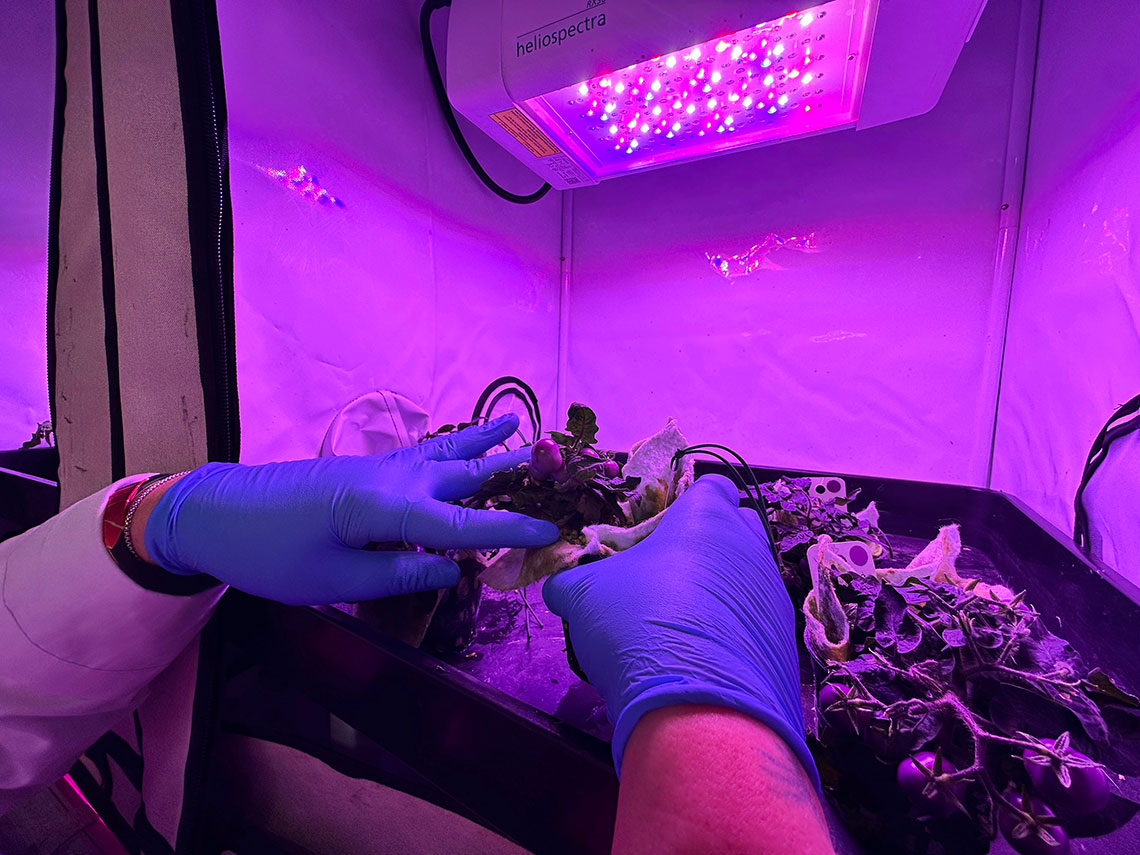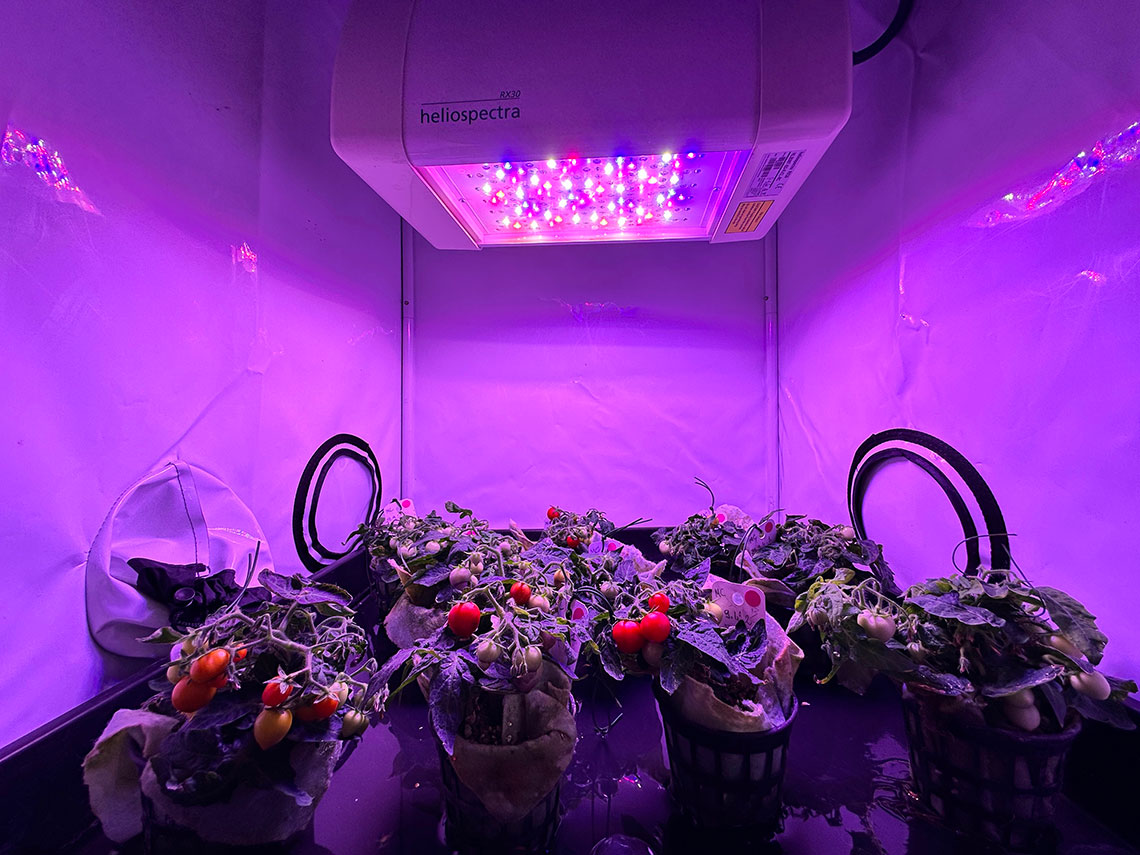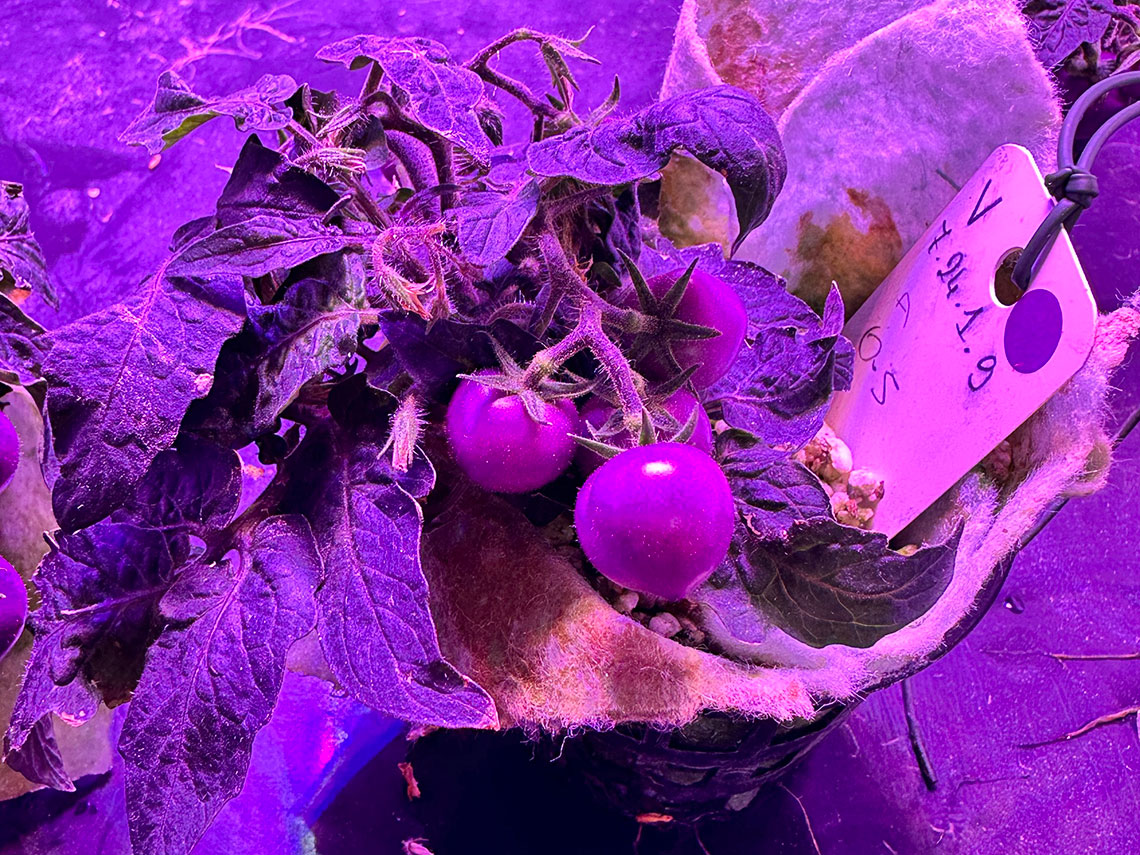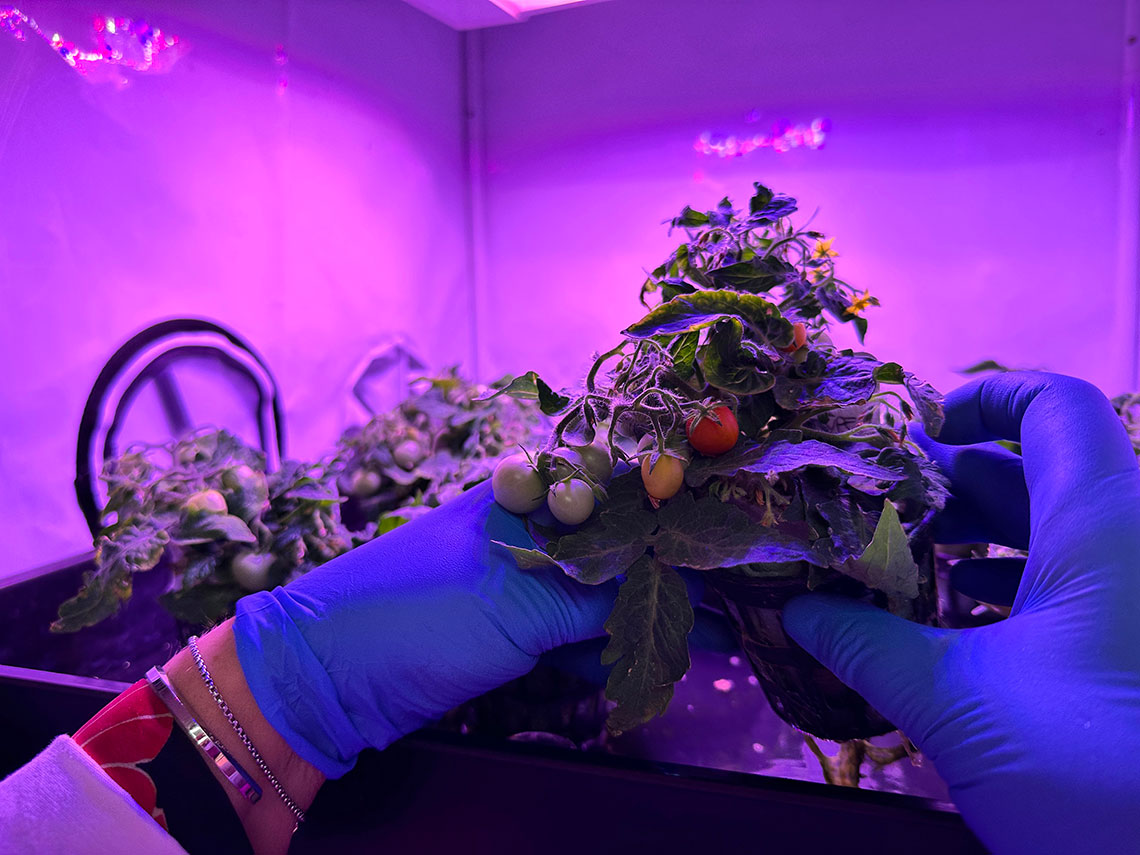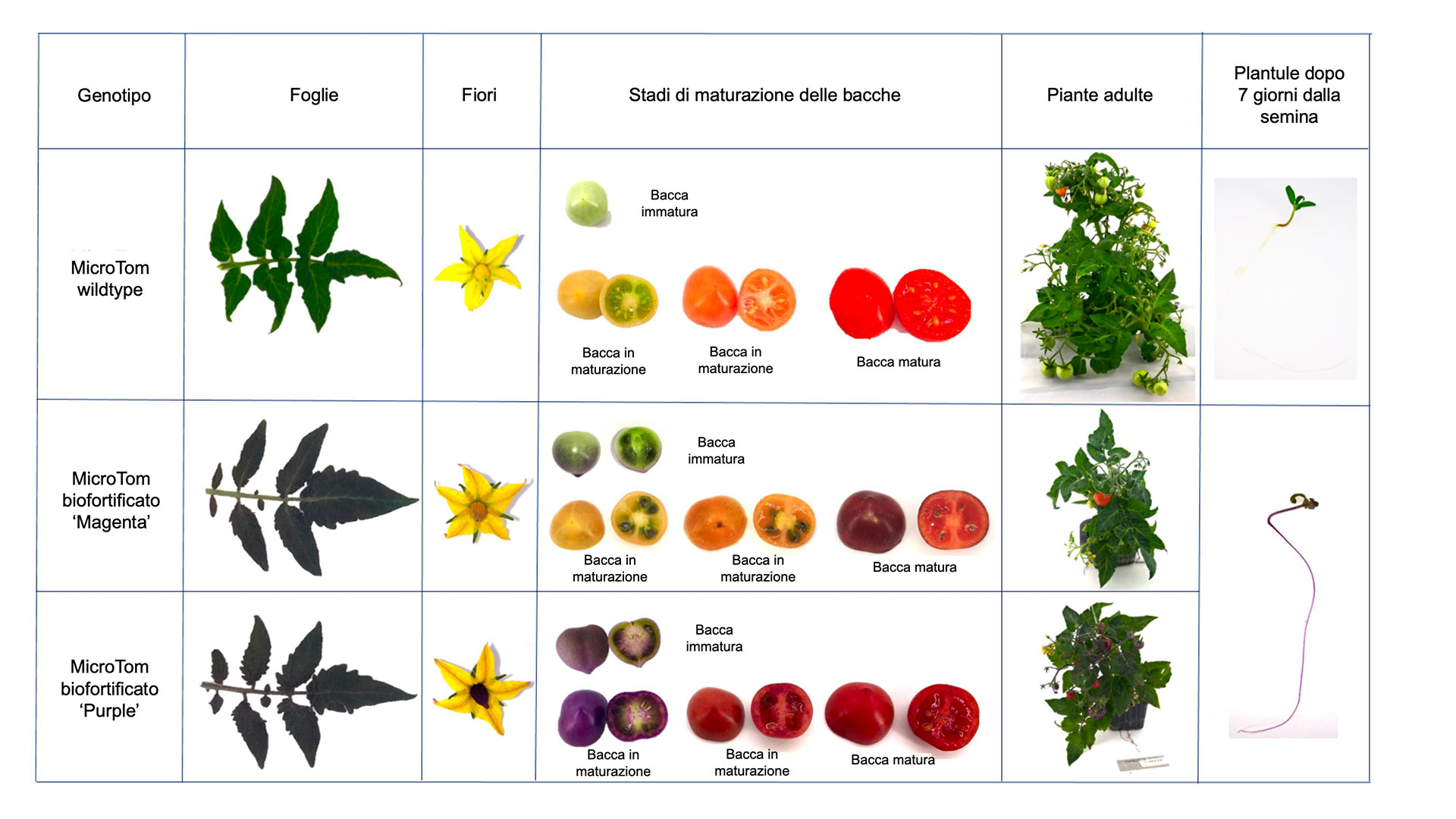Italian National Agency for New Technologies, Energy and Sustainable Economic Development

Space: ENEA develops a biofortified tomato for Space missions
ENEA has engineered dwarf tomato plants enriched with antioxidant molecules beneficial for the diet of astronauts during long-term missions and able to counteract the effects of cosmic radiation for the plant itself. The activities were carried out as a part of the HORTSPACE and BIOxTREME projects, funded by the Italian Space Agency (ASI), and the results were published in the scientific journals Frontiers in Astronomy and Space Sciences and Frontiers in Plant Sciences.
“In the roadmap of human exploration of deep space, where the Moon is a fundamental step toward Mars, astronauts will have to rely only on the available resources," explains Silvia Massa of the ENEA Biotechnology Laboratory. "Plants will follow the space pioneers in the so called bioregenerative life support systems and," she adds, "will support life in future space outposts by providing fresh and healthy food, making astronauts independent of supplies from Earth, and representing the main source of high-value-added molecules, such as antioxidants and biopharmaceuticals, as well.”
In the above-mentioned scenario, the confined environment, the different gravity conditions, and the ionizing cosmic radiation will affect not only human health, but also plant yield and plant-derived food quality.
Since 2014, in the frame of the BIOxTREME project, ENEA has studied how crops perform in the context of a mimicked extraterrestrial environment and developed an ideotype for space missions, derived from the dwarf tomato cultivar ‘Micro-Tom’. As a part of the HORTSPACE project, the researchers assessed how radiation influences the physiology, the productivity and the quality requirements of these plants. Compared to non-engineered Micro-Tom, the tomato developed by ENEA has an even more compact habitus, accumulates anthocyanins, and shows negligible or positive variations of growth, photosynthesis and productivity upon mimicked space radiation.
“To date, the experiments performed on edible plants on board the International Space Station have returned data on food safety, antioxidant capacity, mineral composition, pollination feasibility, but no systematic studies have been conducted on plant performances,” emphasizes Silvia Massa. “Thanks to our model, developed in collaboration with the University of Amsterdam - Swammerdam, we have managed to 'switch-on' again the biosynthesis of anthocyanins, which is dormant in currently cultivated tomato, obtaining a biofortified miniaturized plant that we have systematically studied for the effects of ionizing radiation throughout life cycle, as well as on the main indices of primary and secondary metabolism,” Massa concludes.
The ENEA team used the Calliope facility at the ‘Casaccia’ Research Center (Rome) for their research. “This is a unique facility for irradiation in the Italian and European framework, capable of simulating some of the space conditions and useful for understanding and preventing the effects that the space environment - and the radiation it contains - can have on humans and technological devices,” emphasizes Alessia Cemmi, head of the ENEA Laboratory of Innovative Nuclear Systems.
Space exploration has always been a powerful driver for technologies with applications on Earth, where technological innovation in agriculture is urgently needed to cope with the increase of world population, the reduction of cultivable surfaces, and the effects of climate change. ENEA's research on biotechnologies aims to develop both plants resistant to extreme conditions (i.e., deserts, Antarctic bases, or challenging environments like military bases) and “biofactory” plants for the production of molecules of pharmaceutical interest.
For more information:
Designing a novel tomato ideotype for future cultivation in space manned missions. Front. Astron. Space Sci. – Astrobiology (2023), https://doi.org/10.3389/fspas.2022.1040633.
Effects of gamma radiation on engineered tomato biofortified for space agriculture by morphometry and fluorescence based indices. Front. Plant Sci. 14:1266199 (2023). https://doi.org/10.3389/fpls.2023.1266199.

